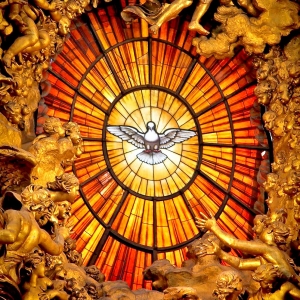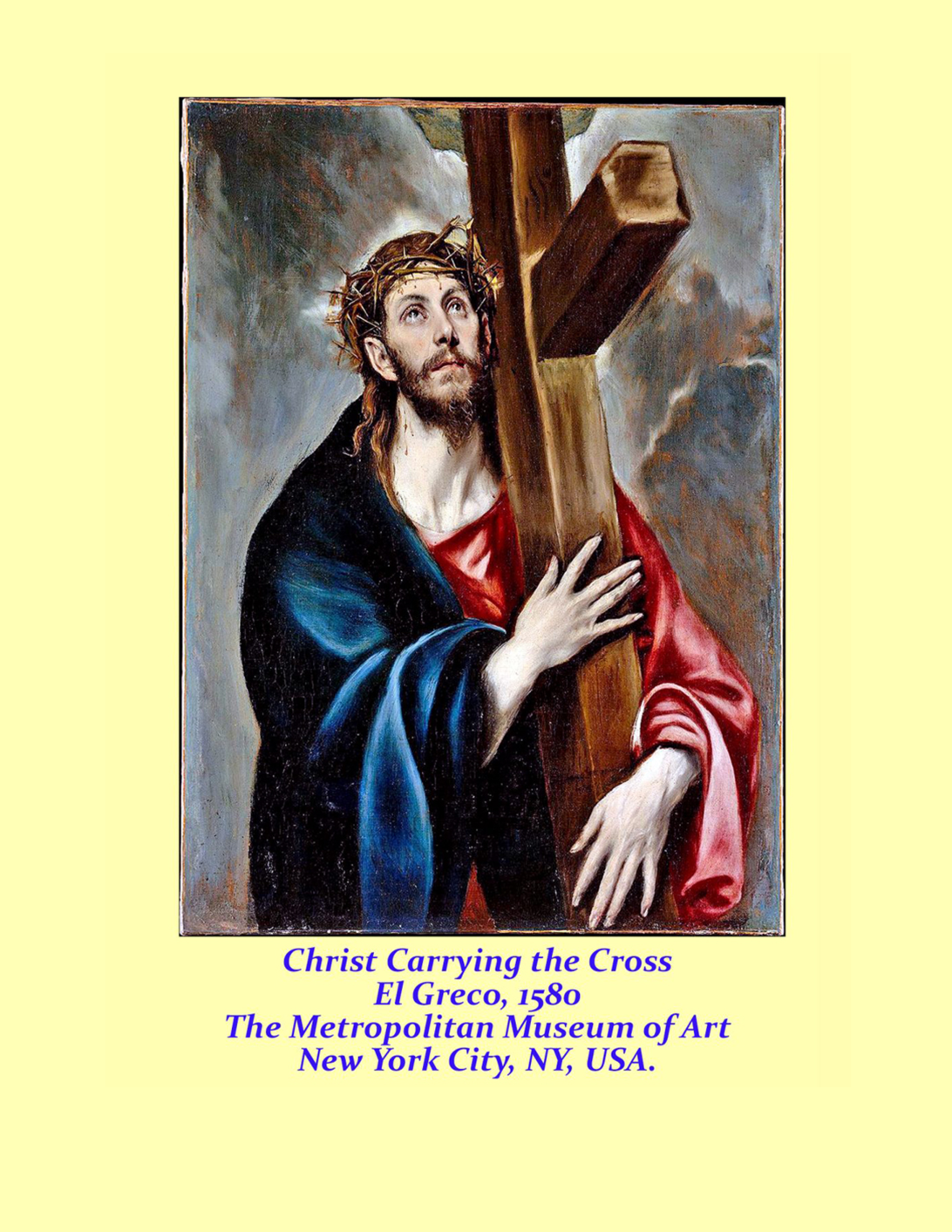 The Last Supper, Munir Alawi November 2018.
The Last Supper, Munir Alawi November 2018.
While they were eating, he took bread, said the blessing, broke it, gave it to them, and said, “Take it; this is my body.” Mark 14:22.
Click here to read today’s Sunday Mass Readings.
Click on words highlighted in red for further information.
There are good Christians throughout the world who accept the Holy Bible as the absolute and irrefutable Word of God. Many reject the findings of science that the world is millions upon millions of years old, because the world was made in six days, according to the Book of Genesis. In Tennessee in 1925, the Butler Act criminalized teaching evolution in high schools as incompatible with biblical teaching. It remained law for 40 years. Even today there is a school of thought which attempts to harmonize biblical with scientific discovery called Creationism. So, for example, many creationists still accept that God created Adam from the dust of the earth, and Eve from one of his ribs. God did that because God can do whatever he wills. This is generally called a fundamentalist approach to biblical teaching, and is not accepted as such by several mainstream churches, including the Roman Catholic Church. However, there tends to be one major exception to this rule, where Catholicism becomes fundamental, and the fundamentalists become relativist. And that concerns today’s feastday.
At the Last Supper, Jesus took bread, blessed it, broke it and gave it to his friends saying “This is my body”. Similarly with a cup of wine, he prayed, and passed it to his friends saying “This is my blood”. We Catholics accept these words as literally true – the consecrated bread and wine are, in fact, the body and blood of the Lord, as he said. And because he also said “Do this in memory of me” every time those words at spoken by a priest at Mass, they are as literally true as they were at the Last Supper: the Lord is actually present under the form of bread and wine. But, and here is the point, many Protestants, including most fundamentalists, do not accept these words as literally true, but claim they are symbolic of the Lord’s presence, not the real presence. However, Jesus did not say at the Last Supper: “This is the symbol of my body”, or “This represents my body”, or “This is a likeness of me” but said simply and directly “This is my body”. Additionally, St. Paul, in his second letter to the Philippians, says “Therefore God exalted [Jesus] to the highest place and gave him the name that is above every name, that at the name of Jesus every knee should bow, in heaven and on earth and under the earth….” which accounts for Catholics kneeling before the consecrated bread and wine, as Jesus is really present there, something most Protestants would not do. And today’s great feast is in honor of that belief. Today many parishes will carry the consecrated bread, in a monstrance, through the streets around the parish church, as witness to the belief that the Lord is present in the midst of everyday life.
 The Dominicans at St. Mary Church in New Haven, Connecticut hold a Corpus Christi procession on June 18, 2017.
The Dominicans at St. Mary Church in New Haven, Connecticut hold a Corpus Christi procession on June 18, 2017.
It is encouraging to find out that most Catholics do, in fact, accept and believe in the “Real Presence” of the Lord, as the consecrated bread and wine is called, ranging from 64% to 95%. This might be considered to be the most deeply felt truth of Catholicism, without which our faith would be eviscerated. To walk into a church which does not accept this as a reality, a Catholic feels a coldness, an emptiness which is not pleasant or welcome. That little red lamp at or near the altar tells us that Jesus is present really and actually in the consecrated bread within the tabernacle. After the Holy Thursday mass, which ends when the sacred species (as the consecrated bread and wine are called) are taken to another private reserved place until Holy Saturday. The tabernacle is empty and the door is left open. To Catholic eyes, that seems to be wrong, cold, uninviting. It makes that time really alien, and it only occurs at that time in the year. It signifies the death of the Lord, and his body laid in the tomb. It is the opposite of today’s joyous Corpus Christi celebration, with the Lord actually present even in the streets near the church. Consequently it is up to all of us to be, as it were, the presence of the Lord in the streets, in our life, on every other day in the year, whenever and wherever we are. Perhaps that is the message of the day. We see and acknowledge the Lord present among us, and it is up to each of us to maintain that presence as children of God all all the other days in the year.
A final thought. One young man called Carlo Acutis had a special devotion to the Eucharist and documented all the eucharistic miracles he could find. He created his own website reporting those miracles recognized by the church. The National Catholic Reporter also documented this site. He was also intrigued by marian apparitions and created a site for that purpose also. He was clearly a devoted Catholic and demonstrated this in his life and in his activities. He developed acute promyelocytic leukemia, a fatal blood disease. He died on 12th October 2006 at the age of 15. In May of this year, 2024, Pope Francis recognized the second miracle attributed to this young man’s intercession, and Blessed Carlo will become Saint Carlo sometime this year, the first millennial to be so designated. His overwhelming devotion to the Eucharist powered his short life and enabled him to face acute suffering and die in the grace of God. His body lies in the church of Santa Maria Maggiore, in Assisi where he wished to be buried. He is dressed in jeans, sneakers, and a sweater. For him, the Eucharist was the means whereby he left this world to enter the glory, the peace and the happiness of the next.

The Body of Blessed Carlo Acutis, Church of Santa Maria Maggiore, Assisi, Italy.
PLEASE FORWARD THIS REFLECTION TO THOSE YOU THINK WOULD APPRECIATE IT.
THANK YOU.
Reflections on next Sunday’s Mass Readings will be posted on Wednesday.
Please send your reactions to: RogerJohn@aol.com
© SundayMassReadings.com
Discover more from Sunday Mass Readings
Subscribe to get the latest posts sent to your email.

